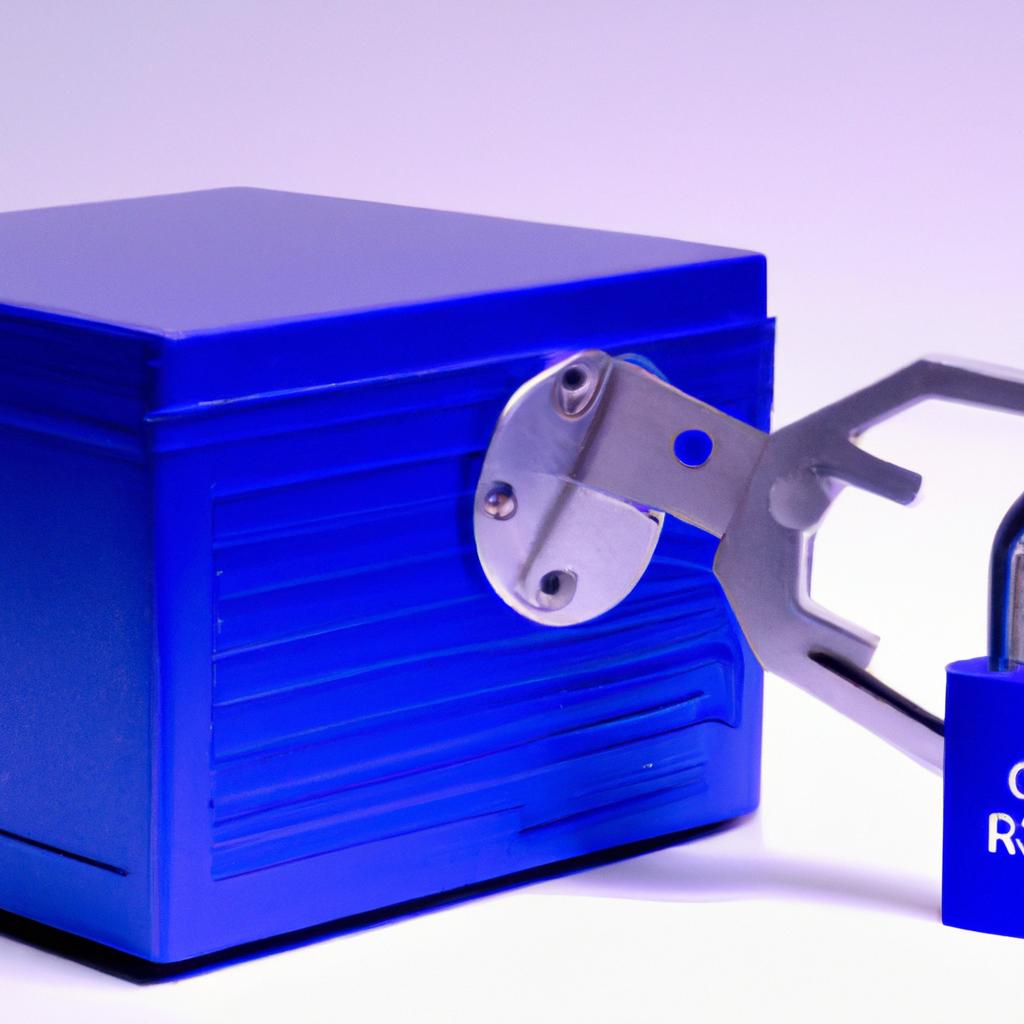Introduction
Choosing the right domain name can seem overwhelming at first, but with a little bit of knowledge, you’ll be able to pick the best one for your website or business. This guide will cover all the key components you need to know when it comes to making your decision such as understanding different types of top-level domains (TLDs), benefits of using each TLD, and the security features associated with each. We will also discuss the cost of registering a domain name and provide some tips to help you make the best decision possible.
Types of Top-Level Domains
When it comes to domain names, there are a variety of top-level domains (TLDs) out there. The most common TLDs include .com, .org, .net, and .edu. But, there are many other TLDs that are just as important and useful.
A top-level domain is the part of the URL that comes after the last period. For example, in the URL www.example.com, the top-level domain is .com.
.com stands for commercial and is mainly used for websites with commercial or monetary intent. It is also the most popular TLD worldwide, so it might be difficult to find a good domain name if you’re looking for a .com.
.org stands for organization and is mainly used by non-profit organizations like charities and NGOs.
.net stands for network and is mainly used for technical infrastructure, such as ISPs and hosting providers.
.edu stands for educational institutions and is mainly used by universities, colleges, and other educational institutions.
These are just a few of the most popular TLDs. Other TLDs include .biz, .info, .co, .me, .io, .tv, etc. Each one has its own purpose and can be helpful when it comes to your website or online presence. With so many options out there, it’s important to look into which TLD best suits your needs.
Explaining the Differences Between The Different TLDs
When it comes to web domain names there are many different options available. The most popular top-level domains (TLDs) are .com, .org, and .net, but there are also dozens of other TLDs including .co, .io, .biz, and more. Understanding the differences between these TLDs can help you make an informed decision when it comes to choosing a domain for your website.
The .com TLD is often the first choice for businesses and commercial websites. This TLD is the most widely used and recognized, so it’s usually the simplest for customers to remember. The .org TLD is geared more towards non-profits and organizations while .net TLDs are often used for tech-related sites.
The other TLDs vary widely in their uses. The .info TLD is typically used by information websites such as news sites or encyclopedia pages. The .co TLD is popular for small businesses, while the .io TLD is often used for software development sites. Other TLDs like .biz, .me, and .tv are becoming increasingly popular as well.
Each TLD comes with its own distinct advantages. For example, the .com TLD is easy to remember, while the .io TLD can denote tech-savvy and cutting-edge websites. The .org TLD conveys trustworthiness and credibility due to its use with non-profits. Knowing which TLD will be best suited for your website can help you make the best choice.
Benefits of Using Individual TLDs
Each type of top-level domain (TLD) offers certain benefits that can be used to your advantage. For example, when you use a .com domain, you are telling people that you are a commercial business, and that your website is where they can go to learn more about you or make purchases from you.
Other TLDs like .org, .net, and .edu also have their own unique benefits. A .org domain is typically used by non-profit organizations, while .net domains are mostly for Internet service providers and other related types of sites. The .edu extension is reserved for educational institutions, granting them certain privileges.
Using the correct TLD for your website can also give you greater visibility and credibility in the eyes of customers and search engines alike. This is because people tend to associate certain TLDs with specific things, so using the right one can signal to them that you are professional and trustworthy.
Furthermore, most TLDs come with security features such as multi-factor authentication, domain locking services, and transfer locks. This provides an additional layer of protection for your website and helps to prevent malicious attacks and hijacking.
Finally, using certain TLDs also gives you access to certain marketing tools and services, such as Google My Business and other similar services.
Overview of Other Available Domain Extensions
There are many other top-level domain extensions available on the internet beyond the traditional .com, .net, and .org. These alternative extensions include .co, .io, .biz, and others. They all serve a specific purpose and have different benefits depending on your needs.
The .co extension is often used by companies and corporations that want to have a recognizable URL without having to create a full website. It can also be used for personal websites, as it stands for “company” and is very easy to remember. The .io extension is often associated with tech startups and is an abbreviation of “Input/Output”. The .biz extension is most often used by businesses to create a professional-looking URL.
Other domain extensions like .me, .info, .tv, and .tech are also available and can be helpful in boosting your brand’s visibility. .me is short for “Myself” and is great for creating a personal website. .info is often used for informational or educational sites related to topics such as history, current events, or technology. .tv stands for “television” and is typically used by video streaming websites. Finally, the .tech extension is most often used by tech companies, startups, and developers.
Examples of Established Brands and Organizations that Use Each TLD
In order to understand the key differences between top-level domains (TLDs), it’s important to look at examples of how established brands and organizations use them. Here are some popular ones:
- .com – Google, Amazon, Microsoft
- .org – World Wildlife Fund, American Red Cross
- .net – Huawei, Sony
- .info – UNICEF, Boston College
- .co – Dell, Ello
- .io – Autodesk, Basecamp
- .biz – QVC, Zillow
- .me – Bark, Instasize
It is easy to see why certain organizations prefer one type of domain extension over another. For instance, a nonprofit organization like the American Red Cross uses .org because it gives the appearance of credibility and trustworthiness. On the other hand, a business like Dell opts for .co because it conveys a sense of innovation, flexibility, and energy.
Best Practices When Choosing Your Domain
Choosing the right domain name is an important part of setting up your business or website. There are a few key things to consider when making this decision. Here are some tips and tricks to help you choose the perfect domain name:
- Choose something relevant to your business or website. For example, if you run an online store for pet supplies, using a domain name that includes the word “pets” in it could be beneficial.
- Keep it simple. Long and complicated domain names can be hard to remember and don’t look as good. Try to stick with one or two words that accurately describe your business and what it offers.
- Avoid numbers and symbols. While they may seem unique and interesting, they are hard to remember and don’t look as good as a simple word combo.
- Make sure it’s available. Do a quick search to see if your dream domain name is already taken. Don’t settle for a domain you don’t like just because it’s available. You’re more likely to find success with a domain name that accurately reflects your business.
Figuring out the perfect domain name takes some thought, but if done correctly, it will be much easier for customers to find your business or website. Make sure to pick something that accurately reflects what you are offering and makes sense. With these tips, you should be able to make a well-informed decision on your domain name.
Cost of Getting a Domain Name
When considering registering a domain name, it is important to understand what the cost may be in order to determine whether it is affordable for you. Generally, the cost of getting a domain name will include the initial purchase price as well as any renewal fees. Depending on the domain extension you choose, prices may vary and there may also be additional associated fees.
Getting a .com domain, for example, can cost anywhere from $10-$50 depending on the registrar. Renewal fees are generally lower, but some registrars may also offer promotional discounts for renewals. Additionally, some domain extensions may have setup fees or recurring fees that need to be taken into account.
It is important to shop around when choosing a registrar to ensure you get the best price possible. Keep in mind that you get what you pay for–cheaper options may sacrifice features and customer service. It is also important to compare renewal prices because some registrars can charge more for renewals than they do for initial purchases.
Overall, registering a domain name doesn’t have to break the bank. With some research and careful consideration of the cost, you can find a domain name that fits within your budget.
Security Features
When choosing a domain name, security is an important factor to consider. Each domain type comes with its own set of security features, including privacy and encryption. .com includes Whois privacy protection, while .net and .org both come with DNSSEC security, giving your domain protection against malicious attacks. Additionally, .co domains come with advanced spam protection, adding an extra layer of security to your website.
Many other domain types offer similar sets of security features, but it’s important to be aware of the specific protection each domain type provides. Knowing the security features for each domain type can help you make an informed decision when selecting the right domain extension for your website.
Managing Multiple Domains
When you want to have multiple domains for your business, it can be tricky trying to manage them all. With the right tips and tricks, though, you can easily manage multiple domains simultaneously. Here are some tips to help make the process easier:
- Always keep track of the different domain names that you have registered.
- Make sure to renew your domains on time, as this will help you avoid any potential issues down the line.
- Check into the different services that provide multiple domain management and use them to simplify the process.
- Set up a system to keep track of domains and make sure they are all in good standing.
- Be aware of any applicable domain registration rules and regulations in your area.
By following these tips, you will be able to easily manage multiple domains at the same time. This will help ensure that your business is running smoothly and efficiently.
When choosing a domain name, many people overlook the importance of top-level domains (TLDs). TLDs are the letters right after the dot in the domain, and can have a large impact on SEO. For example, using a “.com” TLD may be more beneficial for SEO purposes than a “.net” or “.org” TLD. This is because .coms are the most popular TLDs, so search engines will recognize them quicker.
It’s also important to understand the purpose of each TLD. For example, .orgs are usually used by non-profit organizations, while .edu are meant to be used by educational institutions. Each of these have different purposes and can be used to target different audiences. Additionally, there are other TLDs like .co, .io, and .biz that can also be beneficial for SEO purposes.
When choosing a domain name, it’s important to look into the different TLDs and their SEO benefits. However, it’s also important to consider the cost of getting a domain name. Generally, .com domains cost more than other TLDs. It’s also important to investigate any additional security features that may come with certain TLDs.
Finally, if you have multiple websites or domains to manage, it’s best to streamline the process as much as possible. Try to keep similar TLDs in one place, and consider using a domain management service to make the process easier.
In conclusion, when choosing your domain name it’s important to consider the TLDs that are available. Each has its own benefits and drawbacks, but .coms are often the best option for SEO purposes. Additionally, be sure to consider the cost and any extra security features that may come with the chosen TLD. Finally, if you plan to manage multiple domains, consider using a domain management service to simplify the process.
Conclusion
Choosing the right domain name for your website or business is an important step in establishing a successful online presence. With so many different types of top-level domains available, it can be difficult to decide which is best for your needs. This guide serves to provide an overview of the differences between .com, .org, .net, and other available TLDs, while also outlining the benefits, security features, and best practices for choosing the right domain.
We hope this guide has helped you understand the various aspects of domain names, so you can make an informed decision when registering yours. So don’t wait, start your domain search today and create the perfect website for your business or project!
comments: 0




